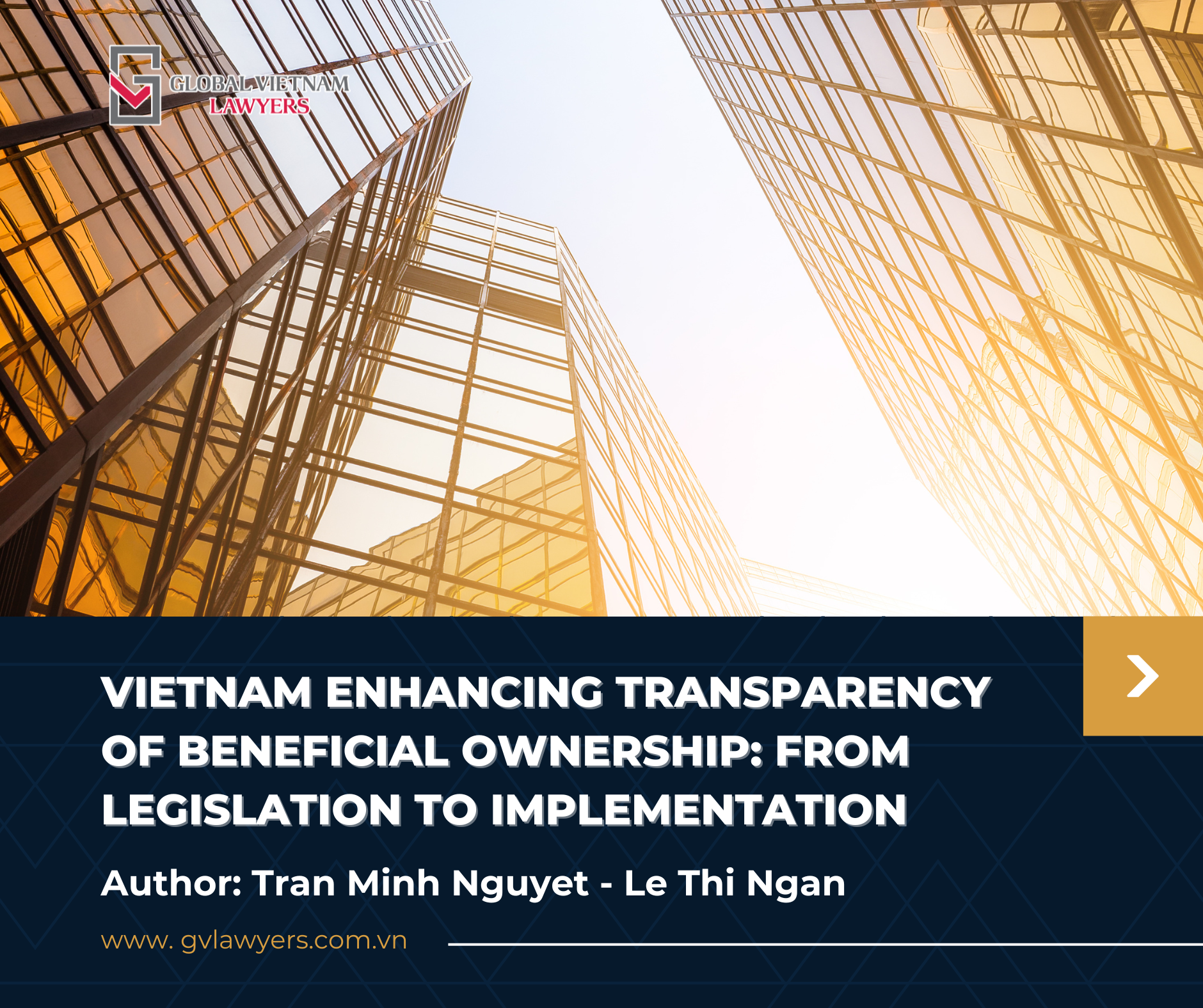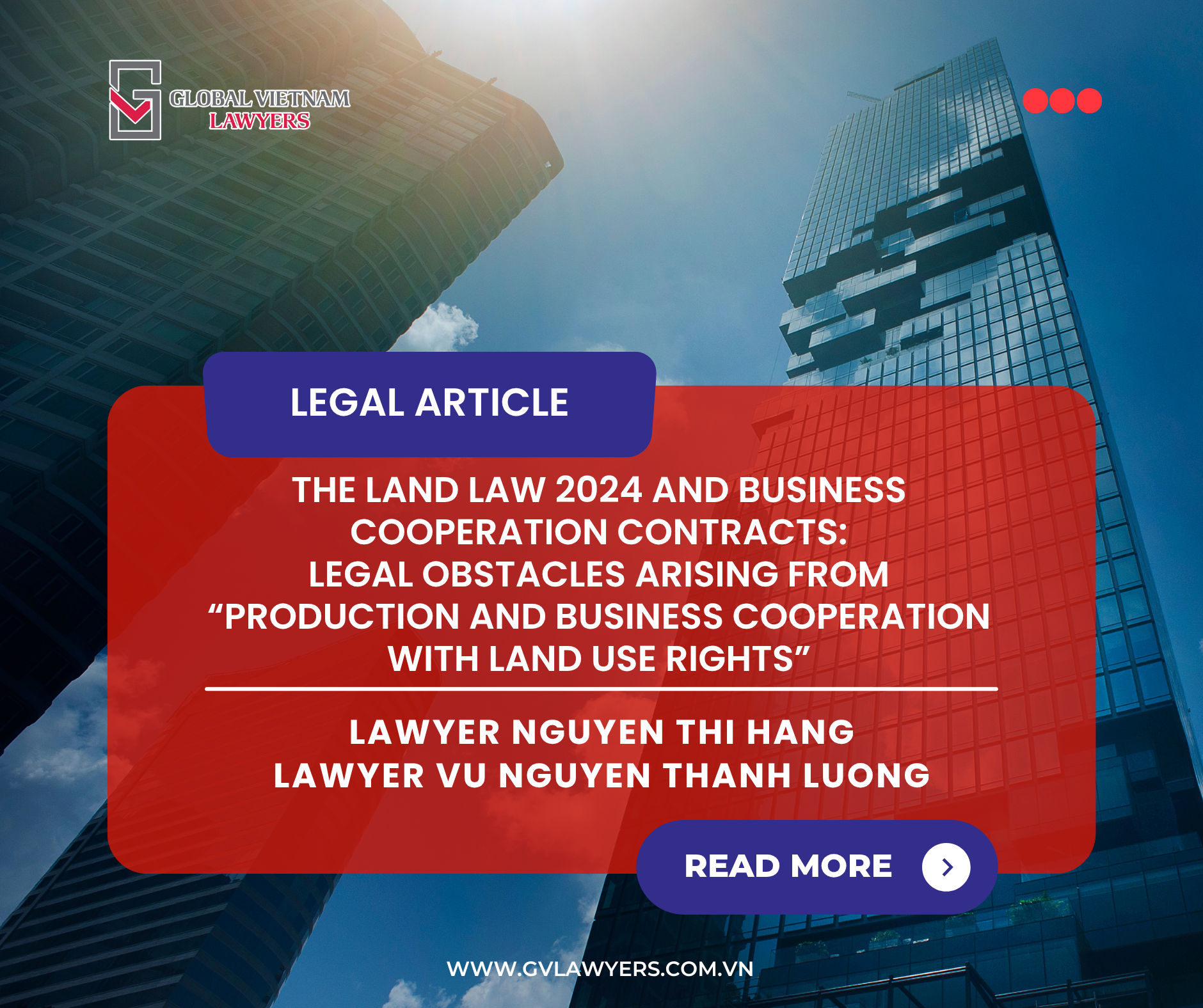GV Lawyers would like to present an article by Mr. Tran Thanh Tung, entitled: “2014 Law on Invesment – Progression and Regression” published in Saigon Times on December 11, 2014, Issue No. 50.2014 (1.252).
***
The 2014 Law on Investment (“LI 2014 “) was been adopted on 26 November 2014 by the National Assembly, replacing the current 2005 Law on Investment (“LI 2005 “). Whilst this law exhibits a freer spirit compared to LI 2005, with clearer governing scope, there still exists a degree of degree of dissonance between the desire to attract foreign investment and domestic investment protection, and between the State’s right to manage and the investor’s right to freedom of investment.
The Law on Investment only manages projects
One of the biggest entanglements of the current LI is how it overlaps with the Law on Enterprises. Under LI 2005, in cases where the implementation of investment projects is coupled with enterprise establishment, the investment certificate includes the contents on business registration and enterprise registration – the investment certificate is concurrently the certificate of enterprise registration. As such enterprises are bowing its neck under two yokes; complying with the LI while adhering to the Law on Enterprises.
On the other hand, LI 2014 has separated an enterprise’s contents of business registration from the investment registration certificate (now called the Investment Certificate) which only governs investment projects while the enterprise establishment shall be governed by the Law on Enterprises. Therefore, the certificate of investment registration now only records the information on investment projects.[1]
Business lines banned from trading investment
The current LI bans investors from investing in areas which are detrimental to national defence, security, public interest, historical monuments, culture, morality, the habits and customs of Vietnam, community health, destroying natural resources, polluting the environment; projects treating hazardous waste from outside to Vietnam; and the production of toxic chemicals or use of banned toxic agents.[2] The current LI defines its area of operation on the scope of its prohibitions; hardly anyone however can figure out the extent to where an “investment area” can be extended. Consequently it is impossible to accurately determine what are the restrictions under the current LI.
However, LI 2014 directly limits business lines by targeting that which is banned from trading investment.[3] Accordingly, the business lines banned from trading investment include drugs, chemicals, banned minerals, wild, endangered and rare plants and animals derived from nature, prostitution, human trafficking, human tissues and organs and activities related to human cloning. LI 2014 Appendix 1 also provides a detailed list of the drugs, animals, plants and minerals banned from trading investment. This regulation in the LI can be seen as giving effect to Article 33 of the Constitution.[4] Its spirit is also reaffirmed in Article 5 which allows investors to carry out trading investment in industries beyond that which is banned.[5]
Conditional business lines for trading investment
Much to the surprise of many people, for the first time, LI will offer a separate appendix (Appendix 4) listing 267 conditional business lines for trading investment.
Based on this figure alone, the number of conditional business lines may lead many to believe that LI expands the scope of conditional business lines (as opposed to 9 current conditional investment areas). However upon closer examination, LDT2014 is more nuanced in its effect, demonstrating that progress has been made in how conditional business lines for trading investment are approached.
First, the current LI listed areas such as national defence, security and social order and security, those related to finance, banking and those impacting public health, and some others as prescribed by law (!), as those which were subject to conditional investment. In other words, the current LI lists the conditional business lines in only broad strokes. LI 2014 now summarizes and clarifies these conditional business lines that have been already listed in other specialized documents.
With this approach, state agencies from now on shall no longer have the right to set up conditional business lines on their own, unless approved by the National Assembly by amending the Law on Investment. Certainly, amending the LI will not be as easy as rectifying a governmental decree or a ministerial circular. Therefore, investors are given increased certainty as they can be assured that this list cannot be change quickly.
Unleashing domestic investors
According LI 2005, domestic investment projects to the tune of VND15 billion or more, or under conditional investment areas, shall obtain investment certificates regardless of whether the invested capital is domestic or foreign. There was reportedly a story of a doctor who wanted to launch a small medical practice and was told he might have to apply for an investment license because his investment operation might be classified as impacting upon “public health”.
Now according to LI 2014, local investor projects shall not go through procedures for the issuing of an investment registration certificate and it is enough for an enterprise to operate under a business registration certificate.
Narrowing the scope of application of an Investment Registration Certificate (“IRC”) for enterprises
Currently all investment projects with foreign capital (even only 1% of charter capital) should also apply for an investment certificate. In an effort to encourage foreign investment, the LI only requires investors to apply for IRC regarding projects of foreign investors (i.e. foreigners investing in Vietnam) and projects of FDI enterprises in which foreign investors holdings account for 51% or more, or foreign investors and FDI enterprises holding 51% or more of charter capital.[6]
The remaining projects with FDI capital (with foreign investors or FDI enterprises holding under 51% of charter capital) will be treated as local investment and do not need to apply for IRC.
Shortening the time for issuing IRC
Under the provisions of LI 2014, the deadline for issuance of IRC for investment projects with respect to an investment policy decision is 5 working days from receipt of the written decision of investment policy; for other projects it is 15 working days from the date of receipt of complete dossiers by the issuance authority.[7]
Meanwhile the time to grant an adjusted IRC is 10 working days from the date of receipt of complete dossiers by the issuance authority.[8]
It may be stated that the time for granting IRC in LI 2014 has been significantly reduced in comparison with LI 2005. However, considering the reality of granting IRC nowadays, we see very few cases of investors being granted investment certificates in time as prescribed in LI 2005. Whether or not investors will experience a “breakthrough” by the licensing authority in terms of the time it takes to grant an IRC remains to be seen.
… However, the law recognizes the mechanism of investment policy decisions
Large projects under Articles 30, 31 and 32 of LI, such as nuclear power plants, transferred purpose national parks, etc., will have to apply for investment approval from the National Assembly, the Prime Minister or the provincial People’s Committee. LI has formally implemented a procedure for the approval of investment policy – this now only applies unofficially for some projects. Although those which must apply for investment policy decisions are large and special projects, the real requirement for investment policy approval may not necessarily arise.
Firstly, the new LI and Enterprise Law has been issued so recently as to not been practically applied; the prudence of the licensing authority may create a favourable environment for the widespread application of procedures for applying the investment policy. In practice a lot of projects which may not be subject to the investment policy application are also forced to apply for an investment policy decision. In addition, the procedure for approval of investment policy may provide an opportunity for incompetent investors to “appropriate” the project through the “solicitation” of investment policy approval.
The issue of foreign investor qualifications has not been solved absolutely
Foreign investors are currently determined by their nationality, so those who are not of Vietnam nationality are foreign investors. However, there is another opinion reckoning that foreign investors should be identified according to capital; enterprises in Vietnam with investment from abroad will be considered as foreign investors. LI ought to choose the first option, but instead of determining foreign investors according to nationality, LI 2014 chooses a neutral option.
The Law classifies foreign investors into 03 groups: (i) investors that have foreign nationality; (ii) Vietnam enterprises that have 51% foreign capital; and (iii) Vietnam enterprises that have less than 51% foreign capital. Group (i) and (ii) are subject to the same conditions as foreign investors (from the investment industry to investment procedures and so on) and group (iii) applies the procedures and conditions of domestic enterprises. It will be difficult to accept this distinction as an enterprise with 51% foreign-owned capital and another enterprise with 50.9% foreign-owned capital have two wholly different procedures applied.
Another irrationality is that even an enterprise with 51% foreign-owned capital (for example, called F1) establishes a new enterprise (called F2) in Vietnam; F2 will still have the conditions and procedures as foreign investors applied. This is a discrimination against Vietnam enterprises themselves, because in terms of nationality, both F1 and F2 are legal entities with Vietnam nationality, so there is no reason to consider F2 as a foreign investor. Moreover, considering the proportion of capital, foreign capital in enterprise F2 may be very low. For example, if foreign capital in F1 is 52% and F1 holds 55% charter capital of F2, as a result, the proportion of foreign capital in F2 is only 28.6% (52% x 55%). It is inconceivable that with only 28.6% foreign capital, enterprise F2 must still comply with investment conditions and investment procedures as prescribed for foreign investors.
Conclusion
Overall, LI 2014 represents the more open spirit of a legislature seeking to attract local and foreign investment. Although more detailed, LI 2014 is not yet thorough enough and certain grey areas left will likely hinder its effectiveness. Of course, time will tell how effective this IL will have on the investment environment of Vietnam.
[1] Article 5.18 of LI 2014
[2] Article 30 of LI 2005.
[3] Article 6 of the Law on Investment.
[4] Article 33 of the Constitution: “Everybody is eligible for the right to business freedom in the business lines beyond legal ban”
[5] Article of the Law on Investment.
[6] Article 23 of Investment Law 2014
[7] Article 37 of LI 2014
[8] Article 40.3 of LI 2014









